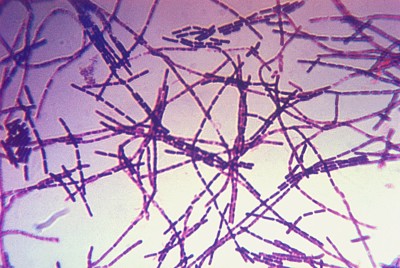Why Did the US Army Ship Live Anthrax?

US military officials revealed Wednesday that the Army bioweapons laboratory at Dugway Proving Ground in Utah shipped live anthrax samples to 18 facilities in nine US states, as well as to a US military base in South Korea.
A Pentagon spokesman said the anthrax spores were supposed to have been killed by gamma radiation, with dead samples shipped to commercial laboratories and the US military base as part of a program that began last year to test methods for recognizing anthrax in the field.
Workers at a Maryland lab that received an anthrax shipment in March 2014 noticed on May 22, 2015 that the spores appeared to be growing, and the lab reported this to the Centers for Disease Control and Prevention (CDC) in Atlanta, Georgia.
A CDC spokesman said,
“The lab was working as part of a DOD [Department of Defense] effort to develop a new diagnostic test to identify biological threats. … Although an inactivated agent was expected, the lab reported they were able to grow live Bacillus anthracis (anthrax).”
The CDC has taken over investigation of the shipments, collecting samples from the various labs and testing them to confirm the anthrax is live. Dugway Proving Grounds tested the remainder of the batch from which the samples were extracted, labeled “AG1,” and found it was live, officials said, indicating that the entire batch had not been properly irradiated.
If the official accounts are to be believed, the shipments of live anthrax represent an almost unfathomable degree of negligence and recklessness. Live samples of one of the deadliest biological warfare agents were sent in FedEx packages all over the United States. The labs receiving shipments have not been identified by name, but they are located in California, Delaware, New Jersey, New York, Tennessee, Texas, Virginia, and Wisconsin, as well as Maryland.
It is less than 14 years since the mailing of anthrax spores through the mail infected 22 people, including 12 US Postal Service employees. Five people died, three of them postal workers. This was an act of domestic terrorism, allegedly carried out by a disgruntled scientist at the US Army’s germ warfare laboratory in Frederick, Maryland. The accused scientist, Bruce Ivins, committed suicide and the case against him was never proven in court.
There are conflicting reports about how many people have been directly endangered by the shipments within the United States. Pentagon officials claim that there was no danger to FedEx workers or the public from the shipping of the packages. Eighteen labs received and opened shipments over the course of 14 months, but only four lab workers so far have been put in post-exposure treatment. These were described as “Defense Department workers,” suggesting that government personnel were working inside the commercial labs.
While only one sample was sent to Osan Air Base in South Korea, at least 22 people in a laboratory there were exposed to the live anthrax bacteria, including five Air Force personnel, ten Army personnel, three civilian officials and four contractors. All are now receiving precautionary medical treatment, although none have shown any symptoms of exposure, according to the Pentagon.
While further details are lacking, the disproportion between the number of samples and the number of those treated suggests that what took place at Osan Air Base was by far the most serious breach of safety. This is particularly ominous, since the base is located in Pyongtaek, on the edge of the Seoul metropolitan area, the world’s second-largest, home to 25 million people.
And it raises other questions, given the massive and intensifying campaign of political provocations directed against North Korea and China. Only five months ago, the US government publicly denounced North Korea for an alleged act of cyberwarfare in the hacking attack on Sony Pictures, provoked by the studio’s production of a film, The Interview, which revolved around a CIA plan to assassinate North Korean leader Kim Jong-un. The White House promised retaliation, but refused to spell out what form that might take.
It is entirely conceivable that anthrax bacteria were sent to South Korea for some other purpose than field-testing diagnostic tests.
Army Chief of Staff General Raymond Odierno discussed the handling of the anthrax bacteria samples during a breakfast meeting with reporters Thursday. He said the military personnel at Dugway had followed correct procedures to make the anthrax inactive before shipping it out. “The best I can tell, there was not human error,” he said. This is certainly a peculiar assertion, since it suggests that the dispatch of potentially lethal bacteria to 19 locations was deliberate and not a mistake.
Odierno was responding to questions about two breakdowns in safety procedures for handling deadly germs and viruses at the CDC last year. In one case, researchers at a lab equipped to handle live pathogens sent what they thought were killed samples of anthrax to another, less well-equipped lab. The samples turned out to be live. In the other case, CDC scientists shipped out what they thought was a relatively harmless strain of bird flu, but it turned out to be extremely virulent.
The live anthrax samples from Dugway were sent out during this same period, beginning in March 2014, and continuing until last month.

